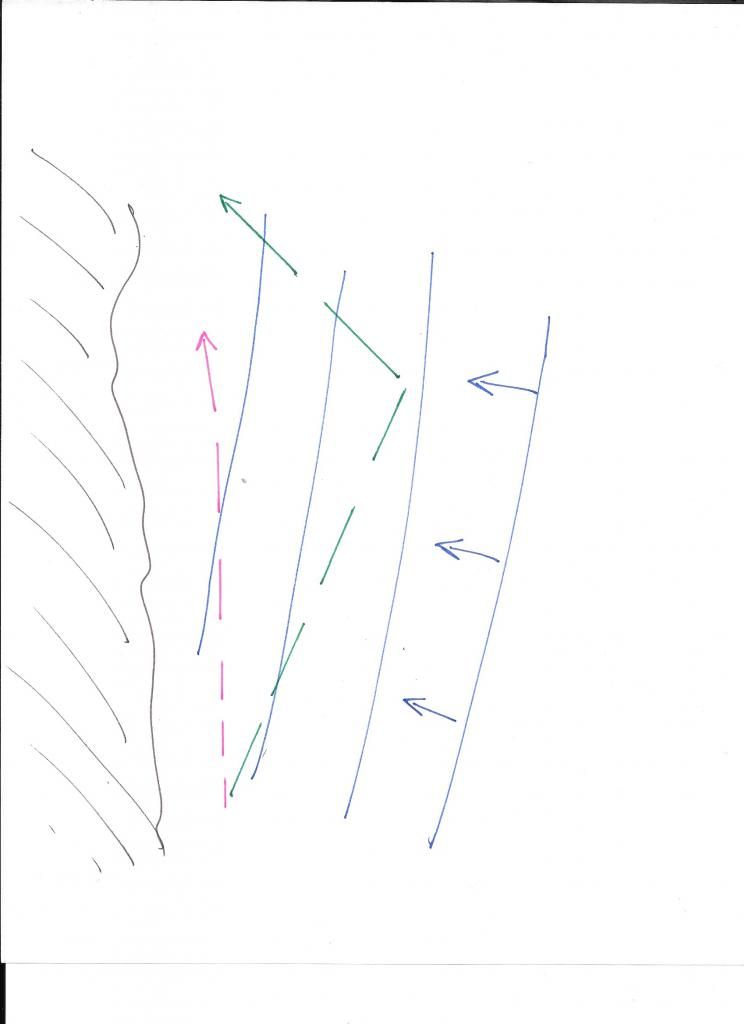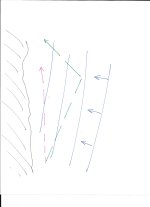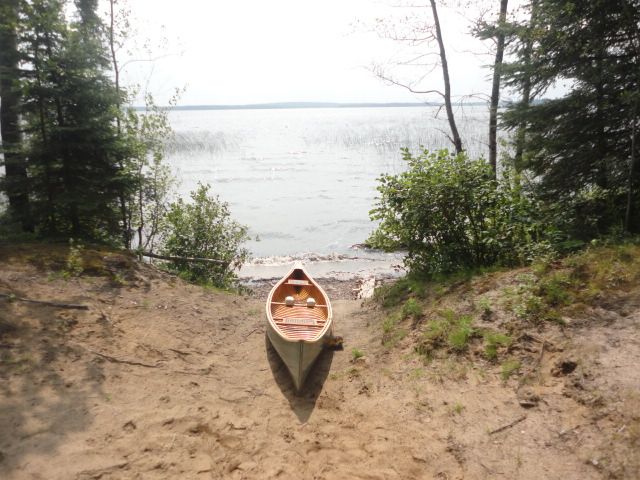This fall we paddled into broadside winds up on Eagle Lake, To make things worst we had an empty canoe. Our line of travel was the red and the blue the waves as we continued the waves (a foot or more) were perpendicular to our line.

My first attempt was to keep the bow just slightly beyond perpendicular to the waves and slow paddle out but have the wind drive us in to shore, that way we could make forward progress but not end up out in the lake.
When the wind died I increased the angle (Green) and then tacked towards shore. The next day we ran into the same thing loaded.
Any other suggestions on how to deal with broadside winds other then seating them out.

My first attempt was to keep the bow just slightly beyond perpendicular to the waves and slow paddle out but have the wind drive us in to shore, that way we could make forward progress but not end up out in the lake.
When the wind died I increased the angle (Green) and then tacked towards shore. The next day we ran into the same thing loaded.
Any other suggestions on how to deal with broadside winds other then seating them out.


